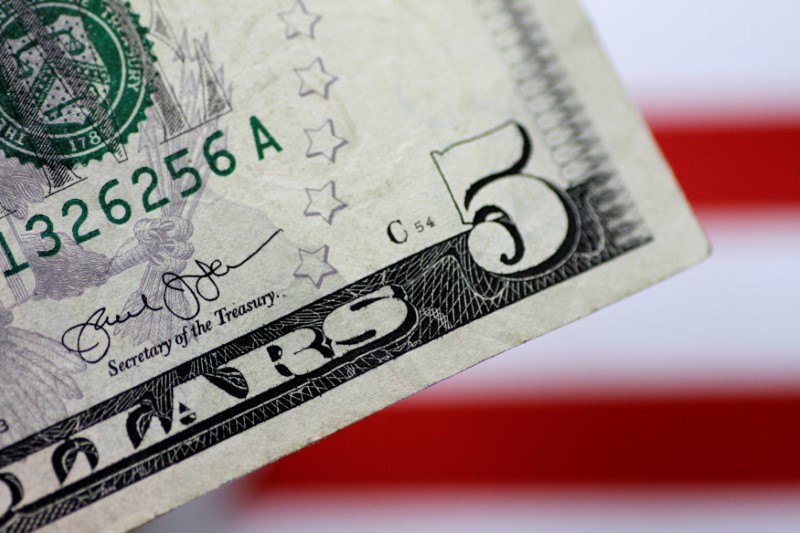* Yen firm after biggest weekly gains since 2016
* Euro also up as euro carry trade pared back
* Investors bet on Fed rate cut at March 17-18 or even earlier
* Pound, emerging markets currencies suffer
* Graphic: World FX rates in 2020 https://tmsnrt.rs/2RBWI5E
By Hideyuki Sano
TOKYO, March 2 (Reuters) - The yen and the euro were on the front foot against the dollar on Monday as traders raised their bets of an interest rate cut by the U.S. Federal Reserve this month to shield the economy from the rapid spread of the coronavirus.
As U.S. shares were routed in recent days, Federal Reserve Chair Jerome Powell said on Friday the central bank will "act as appropriate" to support the economy in the face of risks posed by the coronavirus epidemic. took his comments as a hint that the Fed will cut interest rates by at least 0.25 percentage point at its next scheduled meeting on March 17-18.
There is even increasing chatter of an unscheduled move, with a U.S. bank lobby economist saying a coordinated global interest rate cut by the top central banks could happen as early as on Wednesday. expectations around the Fed underscored the speed and scale of the virus' spread from China through to dozens of countries and the potentially crippling blow to the global economy.
Investors expect the dollar's yield advantage - a key support for the U.S. currency - to shrink as the European Central Bank and the Bank of Japan are seen as having limited room for further cuts given their rates are already in negative territory.
All the same, highlighting the risks posed by the virus, BOJ Governor Haruhiko Kuroda issued a statement to say the central bank would take necessary steps to stabilise financial markets, helping to curtail the yen's earlier gains. yen last stood little changed at 108.15 to the dollar JPY= , having risen to as high as 107.00 in early Monday trade.
The Japanese currency had risen 3.2% last week, the biggest gain since July 2016. Japan's current account surplus and the yen's vast liquidity make the yen behave like safe haven asset.
"It felt a bit like today's fall in the dollar/yen was a near-term selling climax. But regular dollar buyers such as domestic importers are now on the sidelines. So I expect the market to remain volatile," said Shingo Sato, director of currency trade at MUFG Bank.
The euro rose to one-month highs of $1.1074 and last stood at $1.1050 EUR= , up 0.3% so far in Asia, after a 1.7% gain last week, the largest in two years.
The common currency's rise stemmed from unwinding of so-called euro carry trade, in which speculators borrow the euro to invest in higher-yielding currencies, market players said.
The safe haven Swiss franc CHF= also hit 1-1/2-year high of 0.9610 franc per U.S. dollar on Friday and last stood at 0.9642.
Reports of more coronavirus cases in the United States undermined the perceived strength of the U.S. economy and supported the euro and other major currencies against the dollar.
Washington state confirmed a second death from the virus, while New York reported its first case of the illness. China, two surveys showed China's factories were dealt a devastating blow in February as the coronavirus epidemic triggered the sharpest contraction in activity on record. Caixin/Markit Manufacturing Purchasing Managers' Index (PMI) tumbled to 40.3 last month, the lowest level since the survey began in 2004 from 51.1 in January. The official PMI published on Saturday fell to a record low of 35.7 in February from 50.0 in January. data showed the severity of the damage from the coronavirus. If upcoming data undershoots market expectations, that will weigh on sentiment further," said Kyosuke Suzuki, director of currency trading at Societe Generale (PA:SOGN).
Still, helped by signs of stabilisation in the epidemic in China, the offshore yuan firmed slightly to 6.9663 yuan per dollar CNH= , its highest since Feb. 12.
The Australian dollar, often used as a liquid proxy on China, also bounced back to $0.6538 AUD=D4 , up 0.5% after having hit a 11-year low of $0.64345 on Friday.
Sterling traded little changed at $1.2828 GBP=D4 , not far from its 4-1/2-month low of $1.2726 hit on Friday and stood near its lowest levels since October against the euro and the yen.
Among developed market currencies, the pound is seen more vulnerable than its peers at time of major economic crisis as UK's sizable current account deficit meant the country depends on foreign capital.
Investors are also fretting about Britain's negotiations with the European Union over a trade deal and whether a UK budget next month will include much more spending, which many investors say is necessary to boost economic growth.
Selling spread to some emerging market currencies earlier.
The Mexican peso MXN= and the South African rand ZAR= both slumped more than 1% in early Monday trade before erasing losses.
The Turkish lira TRYTOM=D4 , which has been weighed by the country's intensifying involvement in fighting in Syria, slipped a tad to record lows.
